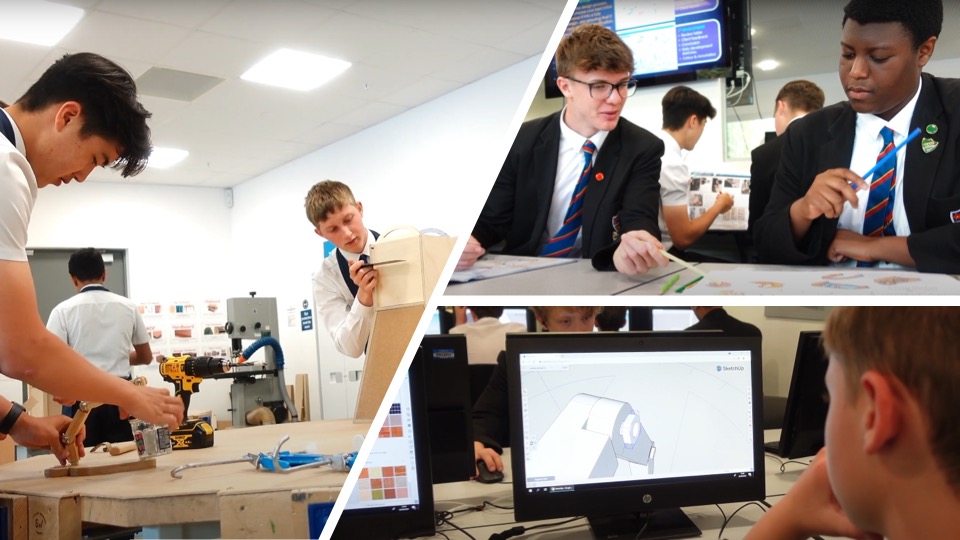Design and Technology
Mr J Leisk - Head of Department
“let us build for ourselves a city, and a tower whose top will reach into heaven” Genesis 11:4
At Saint Ambrose College our design and technology curriculum gives students the skills and abilities to engage positively with the designed and made world and to harness the benefits of technology. They learn how products and systems are designed and manufactured, how to be innovative and to make creative use of a variety of resources including digital technologies, to improve the world around them.
Our aim is to provide students with a greater awareness and learn from wider influences on design and technology including historical, social, cultural, environmental and economic factors. They get the opportunity to work creatively when designing and making and apply technical and practical expertise.

Through a variety of creative and practical activities, our students are taught the knowledge, understanding and skills needed to engage in an iterative process of designing and making. They use research and exploration to identify and understand user needs, then look to solve their own design problems and understand how to reformulate problems given to them.
Students develop specifications to inform their designs and use a variety of approaches to generate creative ideas. They then develop and communicate design ideas using annotated sketches, detailed plans, 3-D and mathematical modelling, digital presentations and computer-based tools.
When making, students select from a wide range of materials and components and use specialist tools, techniques, processes, equipment and machinery including computer-aided manufacture.
Throughout this process of design and manufacture, students will:
- consider the work of past and present professionals and others,
- investigate new and emerging technologies,
- test, evaluate and refine their ideas and products against a specification,
- respond to the views of intended users and other interested groups,
- understand developments in design and technology, its impact on individuals, society and the environment, and the responsibilities of designers, engineers and technologist.
Design and technology students must possess excellent technical knowledge. Therefore, we teach our students to understand and use the properties of materials and the performance of structural elements to achieve functioning solutions, as well as understand how more advanced mechanical systems used in their products enable changes in movement and force.
Key Stage 3
The key stage 3 curriculum in design and technology operates using a rotation system, where classes spend 12 weeks in each of the three areas (shown in the table below). When changing to a new unit they’ll move to a another more specialist room and a new D&T teacher.
Key Stage 4 AQA GCSE Design and Technology
GCSE design and technology content is separated into three main units:
- Core technical principles (CTP)
- Specialist technical principles (STP)
- Designing and making principles (DMP)
The course is assessed via a final written exam (2 hrs, 50%) and a non-exam assessment (NEA, 50%). The NEA is essentially a classroom-based design and make assignment, where students have 30 hours to design and make a prototype. The also produce a 20 page A3 portfolio that must fulfil the following areas of assessment:
Key Stage 5 AQA A Level Design and Technology: Product Design
At A level, design and technology students gain a real understanding of what it means to be a designer, alongside the knowledge and skills sought by higher education and employers.
Over the two year course, study focuses on:
- core technical and designing and making principles, in the context of product design
- developing additional specialist knowledge in relation to students’ chosen area, preparing them for progression into either higher education or careers in this sector.
In a similar manner to GCSE, the A level course is assessed via two written exams (50%) and a non-exam assessment (NEA). You can find an overview of the course is below: